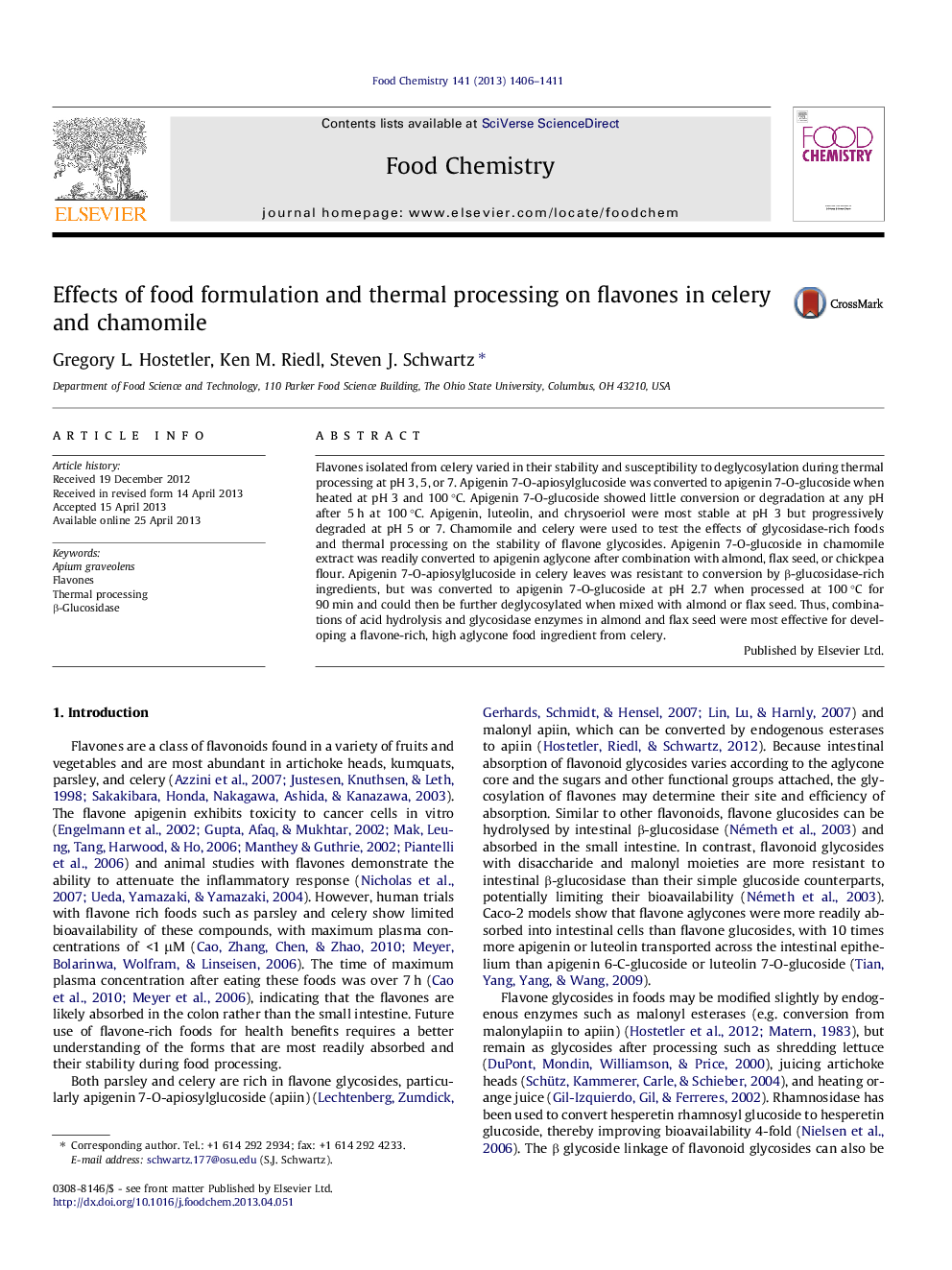| کد مقاله | کد نشریه | سال انتشار | مقاله انگلیسی | نسخه تمام متن |
|---|---|---|---|---|
| 1187167 | 963456 | 2013 | 6 صفحه PDF | دانلود رایگان |

• Acidification and thermal processing can result in flavone deglycosylation.
• Flavone deglycosylation and stability during thermal processing depends on pH.
• Foods rich in β-glucosidase can be used to effect flavone deglycosylation.
Flavones isolated from celery varied in their stability and susceptibility to deglycosylation during thermal processing at pH 3, 5, or 7. Apigenin 7-O-apiosylglucoside was converted to apigenin 7-O-glucoside when heated at pH 3 and 100 °C. Apigenin 7-O-glucoside showed little conversion or degradation at any pH after 5 h at 100 °C. Apigenin, luteolin, and chrysoeriol were most stable at pH 3 but progressively degraded at pH 5 or 7. Chamomile and celery were used to test the effects of glycosidase-rich foods and thermal processing on the stability of flavone glycosides. Apigenin 7-O-glucoside in chamomile extract was readily converted to apigenin aglycone after combination with almond, flax seed, or chickpea flour. Apigenin 7-O-apiosylglucoside in celery leaves was resistant to conversion by β-glucosidase-rich ingredients, but was converted to apigenin 7-O-glucoside at pH 2.7 when processed at 100 °C for 90 min and could then be further deglycosylated when mixed with almond or flax seed. Thus, combinations of acid hydrolysis and glycosidase enzymes in almond and flax seed were most effective for developing a flavone-rich, high aglycone food ingredient from celery.
Journal: Food Chemistry - Volume 141, Issue 2, 15 November 2013, Pages 1406–1411